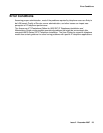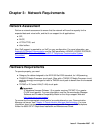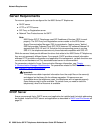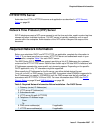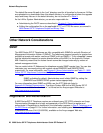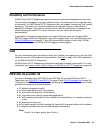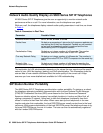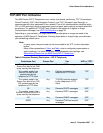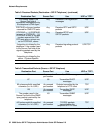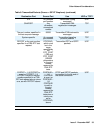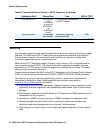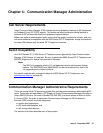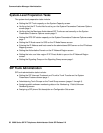
Other Network Considerations
Issue 2 December 2007 31
TCP/UDP Port Utilization
The 9600 Series SIP IP Telephones use a variety of protocols, particularly TCP (Transmission
Control Protocol), UDP (User Datagram Protocol), and TLS (Transport Layer Security) to
communicate with other equipment in the network. Part of this communication identifies which
TCP or UDP ports each piece of equipment uses to support each protocol and each task within
the protocol. For additional TCP/UDP port utilization information as it applies to Avaya
Communication Manager, see UDP Port Selection
on page 39.
Depending on your network, you might need to know what ports or ranges are used in the
operation of 9600 Series IP Telephones. Knowing these ports or ranges helps you administer
your networking infrastructure.
Note:
Note: In many cases, the ports used are the ones called for by IETF or other standards
bodies.
Many of the explanations in Table
and Table refer to configuration parameters or
options settings. For more information about parameters and settings, see
Administering Options for the 9600 Series SIP IP Telephones
.
Table 5: Received Packets (Destination = SIP IP Telephone)
Destination Port Source Port Use UDP or TCP?
The number used in the
Source Port field of the DNS
query sent by the telephone
Any Received DNS messages UDP
The number used in the
Source Port field of the
packets sent by the
telephone’s HTTP client
Any Packets received by the
telephone’s HTTP client
TCP
The number used in the
Source Port field of the TLS/
SSL packets sent by the
telephone’s HTTP client
Any TLS/SSL packets received
by the telephone’s HTTP
client
TCP
68 Any Received DHCP messages UDP
The number used in the
Source Port field of the SNTP
query sent by the telephone
Any Received SNTP messages UDP
161 Any Received SNMP messages UDP
50000 Any Received CNA test request
messages
UDP
1 of 2



